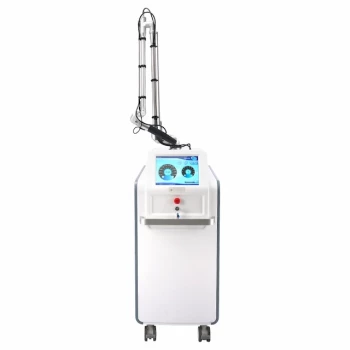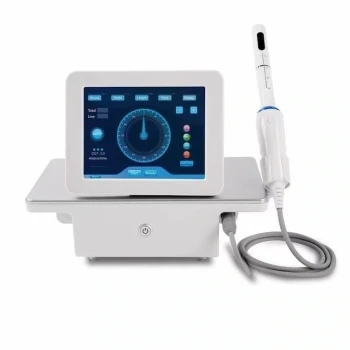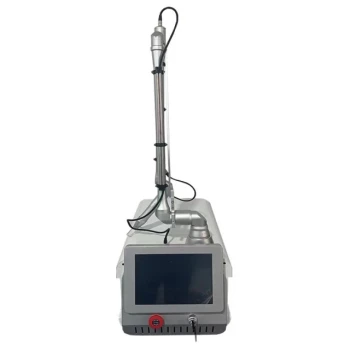At its core, the primary advantage of the Nd:YAG laser is its profound versatility. This stems from its fundamental 1064 nm infrared wavelength, which allows for deep penetration into biological tissues and strong absorption by metals, making it a powerful tool across medicine, manufacturing, and scientific research.
The true power of the Nd:YAG laser lies not in a single benefit, but in its adaptability. Its specific wavelength can be pulsed, focused, and even frequency-modified to perform tasks ranging from delicate eye surgery to cutting steel.
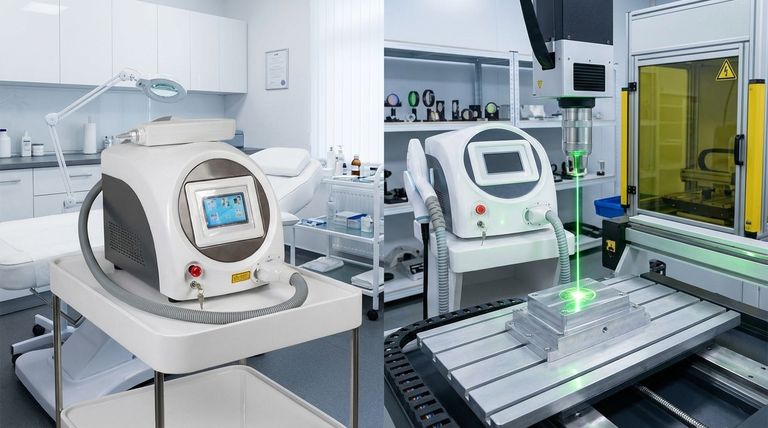
The Core Properties Driving Nd:YAG's Advantages
The laser's benefits are not arbitrary; they are a direct result of the physics of its gain medium—a Neodymium-doped Yttrium Aluminum Garnet crystal. Understanding these properties is key to understanding its capabilities.
The Significance of the 1064 nm Wavelength
The fundamental wavelength of 1064 nanometers (nm) sits in the near-infrared portion of the spectrum. This is arguably its most important feature.
This wavelength has relatively low absorption by water and melanin. This allows the laser energy to bypass the superficial layers of the skin and penetrate deeply into the dermis, targeting structures like hair follicles, deep blood vessels, or tattoo ink particles with minimal damage to the surface.
For industrial applications, this same wavelength is effectively absorbed by most metals, allowing for efficient heating, melting, and vaporization for cutting, welding, and marking.
High Peak Power via Q-Switching
Many Nd:YAG systems can be Q-switched. This technique allows the laser to store a large amount of energy and then release it in an extremely short, high-intensity pulse.
These nanosecond-long pulses create a photo-acoustic effect, where the rapid absorption of energy generates a shockwave that shatters the target. This is the mechanism used to break up tattoo ink particles and destroy pigmented lesions without significant thermal damage to surrounding tissue.
Adaptability Through Frequency Doubling
The versatility of the Nd:YAG laser is dramatically increased by using frequency-doubling crystals (like KTP). These crystals can halve the laser's wavelength from 1064 nm (infrared) to 532 nm (visible green light).
This green light is highly absorbed by hemoglobin (in blood) and red/orange tattoo inks. This makes the frequency-doubled Nd:YAG laser ideal for treating superficial vascular lesions, spider veins, and specific ink colors that the 1064 nm wavelength cannot effectively target.
Reliability and Solid-State Design
As a solid-state laser, the Nd:YAG is mechanically robust and reliable compared to more complex gas or dye lasers. This translates to a longer operational lifetime, lower maintenance requirements, and more consistent performance in demanding industrial or clinical environments.
Understanding the Trade-offs and Limitations
No technology is a universal solution. The same properties that create advantages for the Nd:YAG laser also introduce specific limitations and risks that must be managed.
Risk of Collateral Damage
The laser's deep penetration is an advantage, but it also poses a risk. In inexperienced hands, the energy can damage structures deep below the intended target.
Furthermore, while melanin absorption is low, it is not zero. In darker skin types (Fitzpatrick IV-VI), there is a higher risk of the laser energy being absorbed by melanin in the epidermis, potentially causing burns or pigmentary changes. This demands significant operator skill and careful parameter selection.
Wavelength-Specific Targeting
The 1064 nm wavelength is not ideal for every task. It is poorly absorbed by water, making it unsuitable for applications that rely on vaporizing water-rich tissue, such as ablative skin resurfacing.
For these procedures, lasers with higher water absorption, like CO2 (10,600 nm) or Erbium:YAG (2940 nm), are the superior choice.
Cost and System Complexity
High-power, Q-switched, or frequency-doubled Nd:YAG laser systems are complex and represent a significant financial investment. They require specialized cooling systems and high-voltage power supplies, adding to their overall cost of ownership and operational footprint.
Making the Right Choice for Your Application
Selecting the correct laser technology requires matching the laser's physical properties to the specific characteristics of your target material or tissue.
- If your primary focus is tattoo removal or treating deep pigmented lesions: A Q-switched Nd:YAG is the industry standard due to its deep penetration (1064 nm) and ability to target multiple colors (using 532 nm).
- If your primary focus is metal marking, welding, or cutting: An industrial Nd:YAG or a related Ytterbium-doped fiber laser offers the power, beam quality, and material absorption needed for these tasks.
- If your primary focus is superficial skin resurfacing for fine lines: An Erbium:YAG or CO2 laser is a more appropriate choice because their wavelengths are highly absorbed by water in the epidermis.
- If your primary focus is hair removal on darker skin types: The 1064 nm Nd:YAG is often considered the safest and most effective option because its low melanin absorption minimizes the risk of epidermal damage.
Ultimately, choosing a laser is about understanding the precise interaction between light and matter to achieve a predictable outcome.
Summary Table:
| Key Advantage | Primary Application | Key Wavelength |
|---|---|---|
| Deep Tissue Penetration | Tattoo Removal, Hair Removal (Darker Skin) | 1064 nm |
| High Peak Power (Q-Switched) | Pigmented Lesion Treatment, Industrial Marking | 1064 nm |
| Versatile Wavelength (Frequency Doubling) | Vascular Lesions, Red/Orange Tattoo Ink | 532 nm |
| Solid-State Reliability | Consistent Performance in Clinical/Industrial Settings | N/A |
Ready to harness the power of Nd:YAG technology for your clinic or salon?
BELIS specializes in providing professional-grade medical aesthetic equipment, including advanced Nd:YAG laser systems. Our solutions are designed to help medical aesthetics clinics and premium beauty salons deliver safe, effective, and profitable treatments.
Contact our experts today to discuss how a BELIS Nd:YAG laser can enhance your service offerings, improve patient outcomes, and grow your business.
Visual Guide
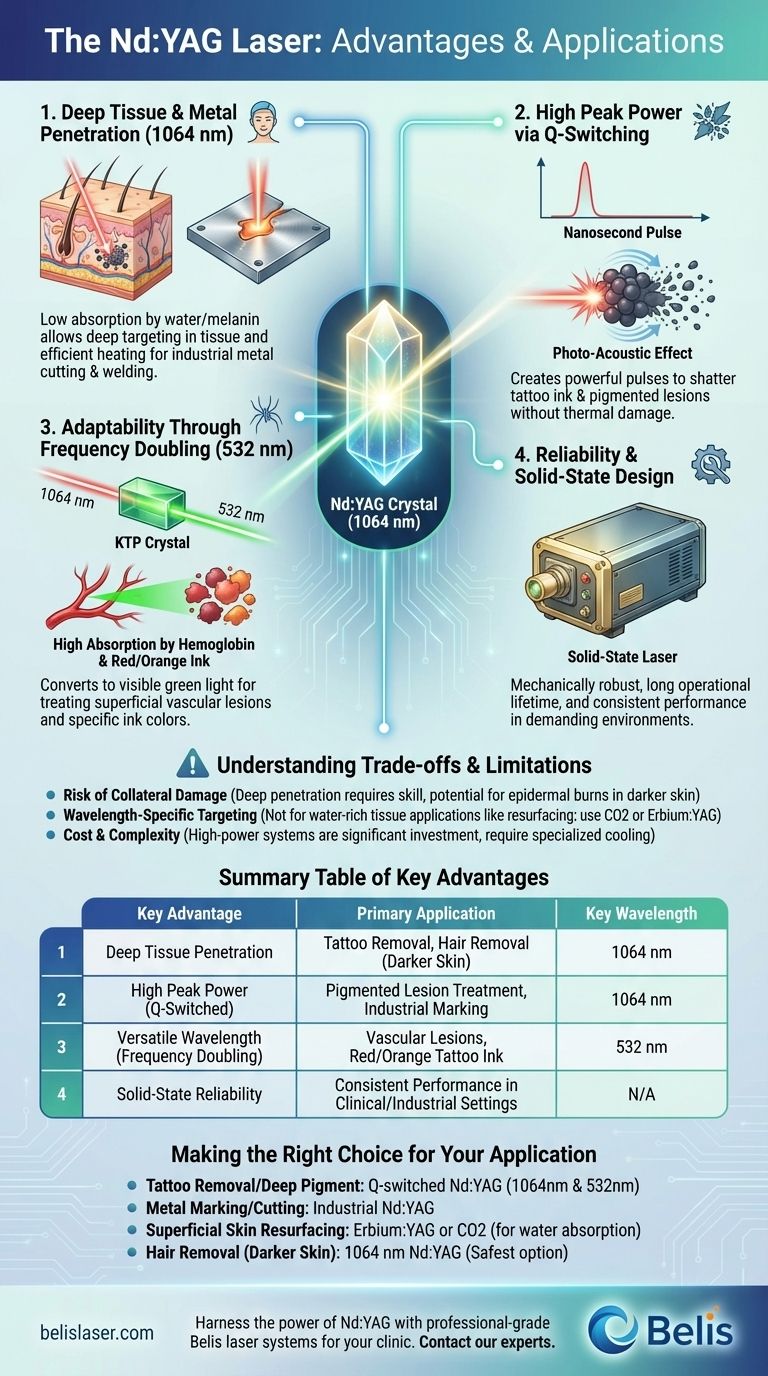
Related Products
- Q Switch Nd Yag Laser Machine Tattoo Removal Nd Yag Machine
- Clinic Use IPL and SHR Hair Removal Machine with Nd Yag Laser Tattoo Removal
- Clinic Diode Laser Hair Removal Machine with SHR and Trilaser Technology
- Diode Laser SHR Trilaser Hair Removal Machine for Clinic Use
- Trilaser Diode Hair Removal Machine for Beauty Clinic Use
People Also Ask
- What are Q-switched lasers commonly used for? Remove Tattoos & Pigment with Precision
- What are the disadvantages of Q-switch laser? Managing Risks for Safe Treatment
- What are the disadvantages of Q switching? Trade-offs in Pulse Control, Cost, and Beam Quality
- How much does a laser tattoo removal machine cost? Choose the Right Tech for Your Clinic
- How long does it take to recover from Nd:YAG laser treatment? A Timeline for Every Procedure






